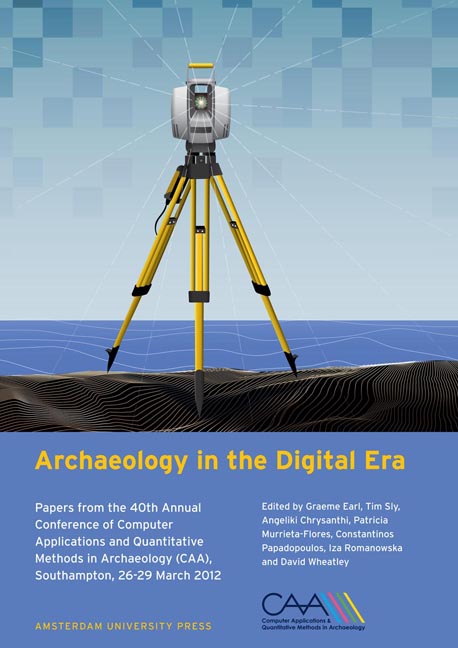 Archaeology in the Digital Era
Archaeology in the Digital Era Extracting Scar and Ridge Features from 3D-scanned Lithic Artifacts
Published online by Cambridge University Press: 16 February 2021
Summary
Abstract:
We propose a method for computer analysis ofsD-scanned lithic artifacts. It provides a detailed description of the scars and ridges that were left on the surface of the stone tool while it was produced by knapping. Traditional documentation and research methods are based on hand drawn images of stone tools and manual measurements. Our algorithm enables automatic, objective and precise documentation of the tool surface, together with a quantitative analysis of the scar and the ridge networks. The proposed algorithm detects ridges on the surface of the scanned object, segments the surface to scars and calculates features that can be used for clustering and classifying lithic artifacts. We demonstrate our method on various lithic artifacts, present the extracted features and compare the results to traditional hand drawings.
Keywords:
Scars and Ridges, Lithic Artefacts, Segmentation, 3D Scanning
Introduction
Much of what is known today about prehistoric periods derives from the study of stone artifacts manufactured during the Paleolithic period that spans over 99.5% of human history. The gradual evolution of stone technology from rough and simple forms to highly sophisticated and refined objects marks the cognitive evolution of the human brain, as well as the development of manual, technical and social skills. Prehistoric stone tools were manufactured by knapping flakes from a stone core and creating a scared surface. The surface that is created after removing a flake is called a scar and the boundary of the scar a ridge. As more flakes are removed, ridges become borders between adjacent scars on the lithic artifact (Fig. 1).
The most important and difficult task of the archaeologist is to decipher the mute messages embedded in the shapes and forms of the lithic artifacts and thus learn about different aspects of the lithic industry. Of prime importance are questions related to the production technology of the artifacts. The very nature of the irreversible process of knapping implies that the producer of a stone artifact had a clear idea not only of the final product he/she had aimed at, but also of the chain of operations which should be followed to achieve the desired goal. Hence, the mental process is engraved in the morphology of artifacts retrieved from prehistoric sites, which include the waste and the final products of knapping - the tools.
- Type
- Chapter
- Information
- Archaeology in the Digital EraPapers from the 40th Annual Conference of Computer Applications and Quantitative Methods in Archaeology (CAA), Southampton, 26-29 March 2012, pp. 83 - 92Publisher: Amsterdam University PressPrint publication year: 2014
- 1
- Cited by
